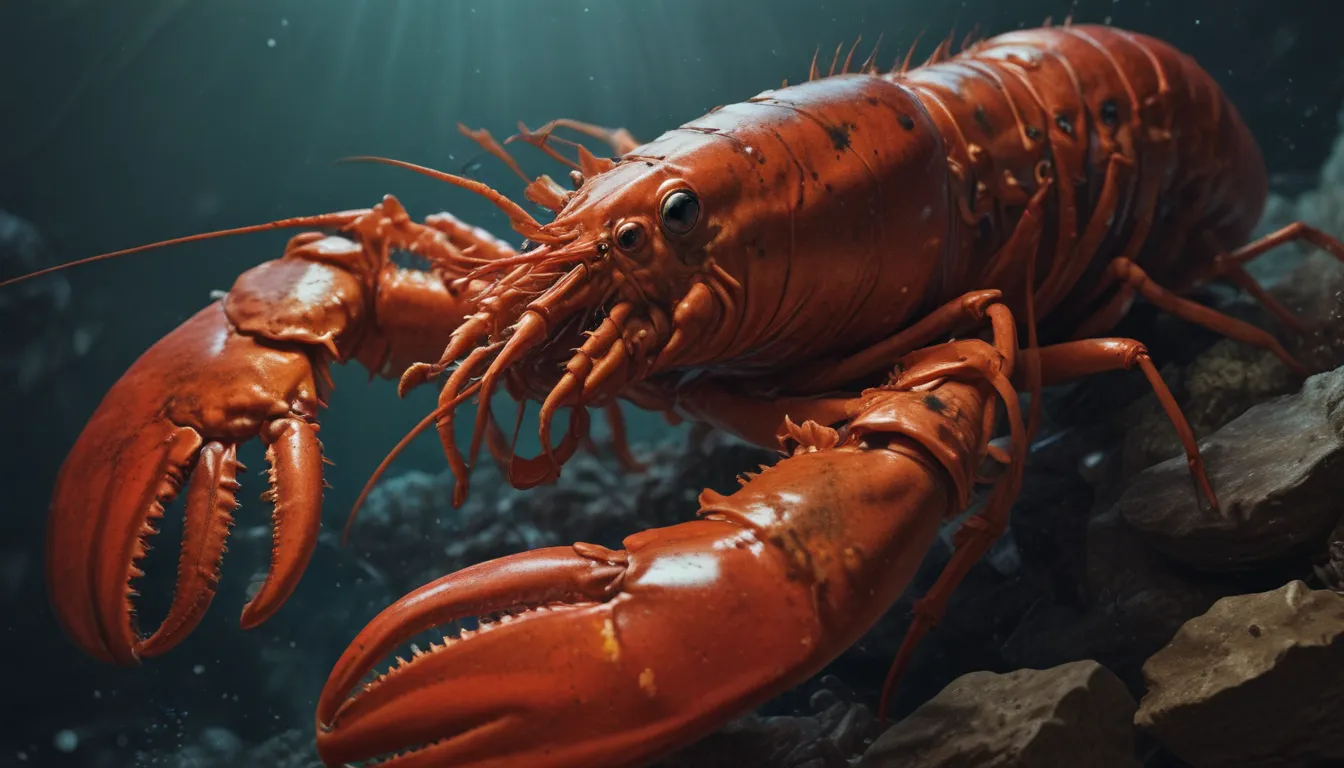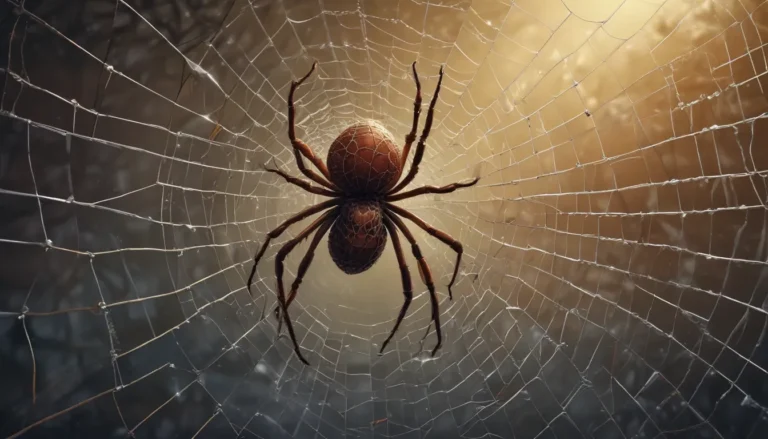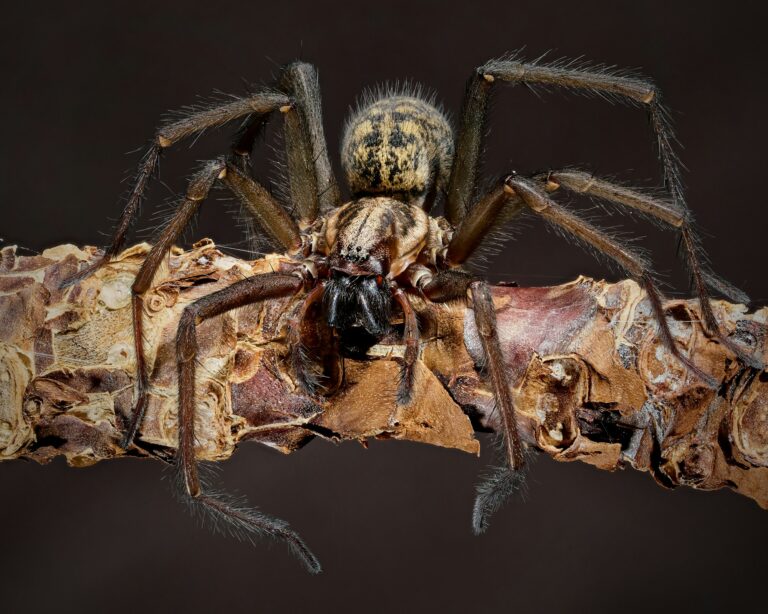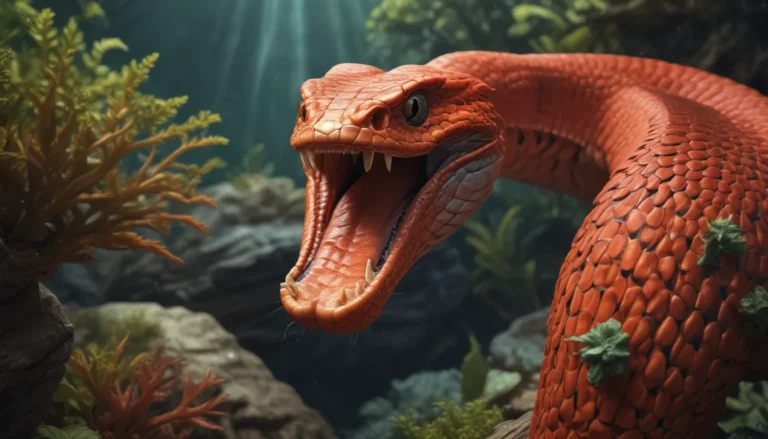The pictures we use in our articles might not show exactly what the words say. We choose these pictures to make you interested in reading more. The pictures work together with the words but don’t take their place. The words still tell you the important facts.
Do you find yourself intrigued by the mysteries of the deep sea? Look no further than the enigmatic world of lobsters, where extraordinary creatures roam the ocean floor. These crustaceans have captured our imagination with their unique appearance and behavior, making them a topic of fascination for many. If you're ready to embark on an underwater adventure and uncover the secrets of lobsters, join us as we delve into 17 fascinating facts about these captivating creatures.
The Colorful Contradiction: Lobsters are not actually red.
Contrary to popular belief, lobsters are not naturally red. Typically appearing in shades of brown or greenish hues, these crustaceans only turn a vibrant red when cooked. Their striking color transformation adds to their allure, captivating those who encounter them in seafood restaurants or while exploring the ocean depths.
The Fountain of Youth: Lobsters have impressive lifespans.
One of the most remarkable aspects of lobsters is their longevity. Some individuals have been known to live for up to 100 years or more, making them one of the longest-living creatures in the ocean. Their ability to withstand the test of time adds a sense of awe to these fascinating creatures.
The Navigator’s Secret: Lobsters are excellent at finding their way.
Lobsters possess an innate sense of direction that allows them to navigate vast distances with precision. Utilizing an internal compass that aligns with the Earth's magnetic field, these creatures can travel long distances to return to their original habitat. Their remarkable navigation skills highlight their adaptability and survival instincts in the underwater world.
The Language of Lobsters: Communication through antennae.
Intriguingly, lobsters communicate with each other using their long antennae. By waving these sensory appendages, they convey messages of aggression, submission, and other social cues. This unique form of communication showcases the intricate social dynamics within lobster populations.
The Power of Claw: Lobsters wield impressive weaponry.
Lobsters possess a dominant crusher claw for crushing shells and prey, along with a smaller pincer claw for tearing food apart. This dual-claw arsenal enables them to efficiently hunt and feed in their marine environment, showcasing their adeptness as predators.
The Molting Mystery: Shedding to grow.
Periodically, lobsters undergo a molting process where they shed their soft exoskeleton to facilitate growth. During this vulnerable phase, they seek shelter to protect themselves as their new shell hardens and their body expands. The molting process highlights the resilience and adaptability of these remarkable creatures.
The Creatures of the Night: Lobsters are nocturnal beings.
Primarily active during the night, lobsters retreat to hidden crevices and caves during the day, emerging under the cover of darkness to hunt for food and interact with other lobsters. Their nocturnal behavior adds an element of intrigue to their already mysterious nature.
The Dark Side: Lobsters can be cannibals.
In moments of opportunity, lobsters exhibit opportunistic feeding behaviors, including cannibalism. Weaker and smaller lobsters may fall victim to their larger counterparts, emphasizing the competitive and survival-driven nature of lobster populations.
The Social Dynamics: Lobsters thrive in a complex hierarchy.
Within lobster populations, a hierarchical structure emerges, with larger and stronger individuals typically holding dominant positions. These dominant lobsters enjoy better access to resources and mating opportunities, showcasing the intricate social order that governs their world.
The Dance of Love: Pair-bonding rituals in lobsters.
During mating season, male lobsters utilize their urine to attract females, who evaluate potential mates based on the scent of the urine pheromones. This unique courtship ritual highlights the fascinating behaviors that underpin lobster reproduction.
The Gastronomic Delight: Lobsters enjoy a delectable palette.
Lobsters possess taste receptors not only on their claws but also on their legs, mouthparts, and even in their stomachs. This extensive network of taste buds allows them to savor their food from various angles, enhancing their culinary experience in the underwater realm.
The Miracle of Regeneration: Lobsters can regrow lost limbs.
In a remarkable display of resilience, lobsters have the ability to regenerate lost limbs through a process known as autotomy. This capacity for self-repair underscores their adaptability and survival skills in the face of adversity.
The Epitome of Luxury: Lobsters are culinary sensations.
Renowned for their succulent meat, lobsters have become synonymous with luxury and gourmet dining. Their rich flavor and texture make them prized ingredients in fine dining establishments, elevating them to culinary icons in the seafood world.
The Economic Titan: Lobster fishing fuels an industry worth billions.
The lobster fishing industry plays a vital role in many coastal economies, contributing significantly to global markets valued in the billions of dollars. This economic powerhouse sustains livelihoods and communities reliant on the bounty of the sea.
The Aquatic Acrobats: Lobsters swim using their bladders.
While predominantly bottom-dwellers, lobsters can propel themselves through the water by contracting their abdomens and expelling water from their bladders. This swimming ability showcases their agility and adaptability in different marine environments.
The Resilient Survivors: Lobsters excel at regeneration.
In addition to regrowing lost limbs, lobsters demonstrate the remarkable capacity to repair damaged organs and tissues. Their innate ability to heal and regenerate underscores their resilience and survival instincts as denizens of the ocean.
The Guardians of Balance: Lobsters uphold marine ecosystems.
Lobsters play a crucial role in maintaining ecological balance by scavenging on dead organisms and regulating the populations of certain marine species. Their presence contributes to the health and sustainability of underwater habitats.
Unveiling the Enigma: A Conclusion on Lobsters
As we uncover the captivating world of lobsters through these 17 fascinating facts, we gain a deeper appreciation for these extraordinary creatures. From their longevity and social structures to their unique behaviors and culinary significance, lobsters stand out as remarkable denizens of the ocean. Whether you're enthralled by their intricate mating rituals or their culinary allure, lobsters continue to intrigue and inspire curiosity in those who encounter them.
So, the next time you savor a succulent lobster dish, remember the remarkable qualities that define these underwater wonders. With a newfound understanding of lobsters, you can indulge in both the sensory delights and the intellectual appreciation for these fascinating crustaceans. Dive deeper into the realm of lobsters and uncover more of their secrets, reinforcing your admiration for these captivating creatures.
FAQs: Satisfying Your Curiosity
- Q: How long do lobsters live?
- A: Lobsters can live for over 100 years, showcasing remarkable longevity.
- Q: Are lobsters immortal?
- A: While not immortal, lobsters have impressive lifespans and can live for a considerable amount of time.
- Q: Do lobsters feel pain?
- A: The ability of lobsters to experience pain is debated, but they do possess nervous systems that respond to stimuli.
- Q: Can lobsters regenerate lost limbs?
- A: Yes, lobsters have the remarkable ability to regrow lost limbs, demonstrating their resilience.
- Q: Are lobsters considered a delicacy?
- A: Yes, lobsters are often prized as a delicacy due to their rich flavor and demand in gourmet cuisine.
- Q: How do lobsters reproduce?
- A: Lobsters engage in complex mating rituals, with females carrying eggs under their tails until hatching.
- Q: What is the largest species of lobster?
- A: The American lobster (Homarus americanus) is considered the largest species of lobster.
- Q: Are lobsters cannibalistic?
- A: Yes, lobsters exhibit cannibalistic behaviors, particularly in opportunistic feeding situations.
- Q: What is the nutritional value of lobster meat?
- A: Lobster meat is low in fat and calories, rich in protein, vitamin B12, zinc, and selenium.
- Q: Do lobsters migrate?
- A: Lobsters may migrate in search of food and suitable habitats, showcasing their adaptability.
- Q: Can lobsters swim?
- A: Lobsters can swim short distances by flexing their tails, demonstrating their agility in the water.
- Q: Are lobsters social creatures?
- A: Lobsters are generally solitary animals, with interactions predominantly occurring during mating or territorial disputes.
- Q: How do lobsters communicate?
- A: Lobsters use a combination of chemicals, sounds, and visual signals to communicate with each other.
- Q: Are lobsters a sustainable seafood option?
- A: Sustainable fishing practices can help maintain lobster populations for future generations.
- Q: How do lobsters defend themselves?
- A: Lobsters utilize their hard exoskeleton and strong claws for defense against predators.
- Q: Can lobsters change color?
- A: Lobsters can change color based on environmental factors, mood, and molting stages.
- Q: What is the economic value of the lobster industry?
- A: The lobster industry contributes significantly to global markets and coastal economies.
- Q: Are lobsters affected by climate change?
- A: Climate change can impact lobster populations through changes in habitat conditions and oceanic factors.
As you continue to explore the depths of knowledge surrounding lobsters, these frequently asked questions provide insights into the intriguing world of these fascinating crustaceans. From their astonishing abilities to their culinary delights, lobsters offer a tapestry of wonders waiting to be unraveled by curious minds.
A Commitment to Quality: Trust in Authenticity
Our dedication to delivering accurate and engaging content is a cornerstone of our mission. Each fact presented is a contribution from real users like you, offering a diverse range of insights and information. Our meticulous editorial process ensures that each submission undergoes thorough review, guaranteeing the credibility and reliability of the facts shared. Trust in our commitment to excellence as you delve into the world of lobsters and expand your knowledge with us.
Indulge in the allure of lobsters, celebrate their uniqueness, and enrich your understanding of these captivating creatures. Embrace the wonder of the ocean's denizens as you discover the myriad facets of lobsters, from their extraordinary behaviors to their vital roles in marine ecosystems. Let curiosity guide your exploration and appreciation for the marvels that lie beneath the waves.
For more captivating insights and factual revelations, continue your journey into the enthralling world of lobsters. Satisfy your appetite for discovery and explore the boundless mysteries that await in the mesmerizing realm of these underwater wonders.






